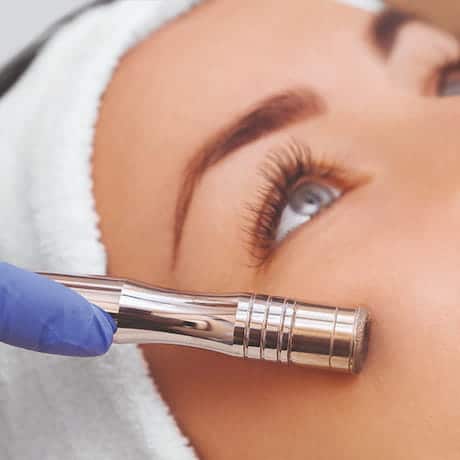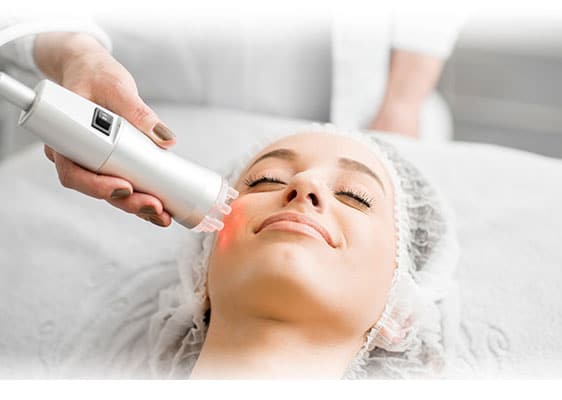Radiofrequency
Radiofrequency Facial is a technique that consists in the application of electromagnetic waves that stimulate the natural processes of collagen regeneration and increase blood circulation; this results in the deep and gradual restructuring of collagen, production and replacement of new fibers and a general improvement of skin condition.
Radiofrequency Facial is mainly used to treat skin laxity, tightening the facial skin, and is the most suitable procedure for patients with mild to moderate sagging of facial tissues. Usually, people between 35 to 50 years old.
The duration of radiofrequency facial is estimated between two and three years. It is recommended a session of radiofrequency facial every three weeks, up to a maximum of six, although its periodicity will be established according to the objectives, age, the area to be treated and the type of skin.

Concern for aesthetics is widespread among people, which is why we all take more and more care of ourselves. But despite the many cares and attentions dedicated to the skin, the passage of time leaves its marks, especially on the face.
Fortunately, there are many treatments that help improve the appearance of facial skin that are less invasive and more accessible. For example, radiofrequency facial.
What is radiofrequency facial?
It is one of the most effective facial rejuvenation treatments available today. It allows you to obtain results remarkably similar to those of a facelift but without resorting to surgery.
The treatment consists of applying radiofrequency waves in the form of heat directly to the face. This stimulates the displacement of fibroplasts and causes the collagen fibers to contract. The result is smoother, softer skin.
Radiofrequency facial also promotes collagen production, so skin looks brighter and smoother. In addition, it has a vasodilator effect. In this way, radiofrequency improves blood circulation. The facial skin thus looks younger.
What does the treatment consist of?
First, the skin must be thoroughly cleansed to remove all impurities and allow the heat to penetrate better. Then the area to be treated is marked. Finally, it is placed on the skin and moved over the marked area for the heat to do its work.
The radiofrequency device emits heat that reaches the deeper layers. The patient may experience some slight discomfort, such as heat or burning, but it is not a painful treatment.
Different types of radiofrequency facial
Just as not all skin is the same, there is no single method of facial radiofrequency. Monopolar or unipolar radiofrequency applies heat to the deep layer of the skin and is used to eliminate localized fat.
Bipolar radiofrequency facial works on the more superficial layers and is particularly useful for making the skin smoother. As for the tripolar, it is a combination of the two previous ones and allows treating fat and tightening the skin, so it helps to fight both fat and flaccidity. The tripolar radiofrequency uses a lower temperature, so logically, the patient feels almost nothing.
What effects does it produce?
Generally, radiofrequency facial improves the appearance of facial skin. It can be used on the forehead, eye area, cheeks, facial oval, chin, and neck.
It involves tightening the skin on the forehead, stretching the skin around the eyes, and closing the pores. At the same time, deeper wrinkles are reduced, superficial wrinkles are eliminated and skin laxity such as papagorgia is combated.
The effects are noticeable from the first application, but the total number of sessions that each patient needs will depend on their condition. Being the radiofrequency facial, normally four to six sessions are applied.
The effects of the treatment are not maintained over time, so a new session will be needed to stimulate collagen production again. If the treatment has been correctly applied by a trained professional, the effects can be visible even after two years.
What type of patients is it recommended for?
This type of treatment is recommended for people whose face is beginning to show signs of aging. Generally, patients should be between 30 and 40 years old and facial damage should be mild to moderate.
The information provided on the website does not replace but rather complements the relationship between the health professional and their patient or visitor and in case of doubt you should consult your reference health professional.
 English
English  Español
Español 